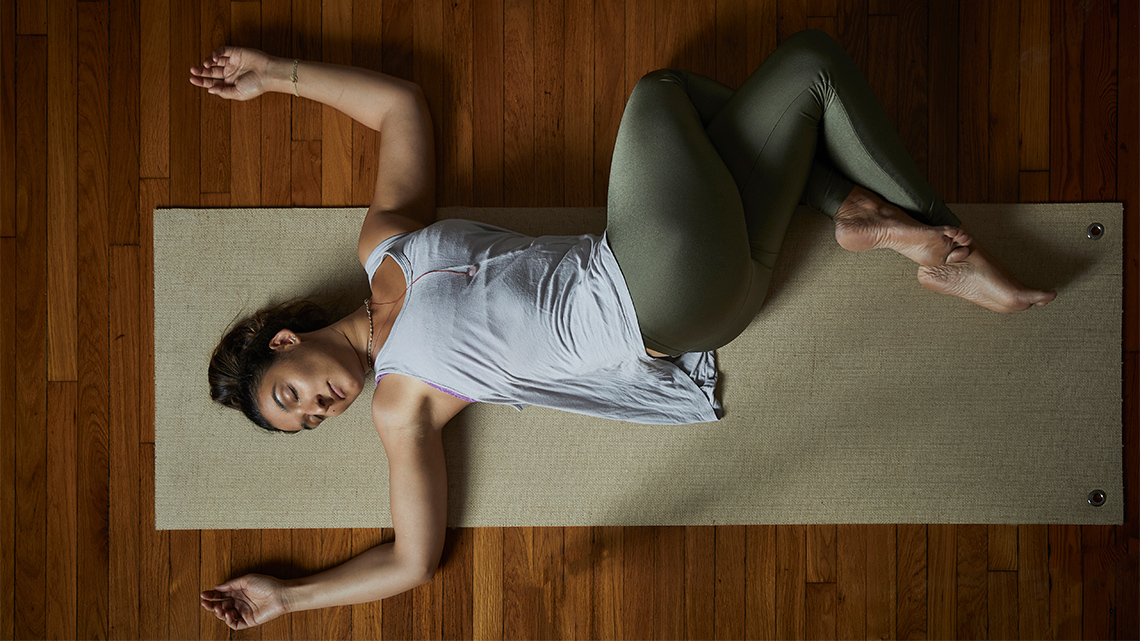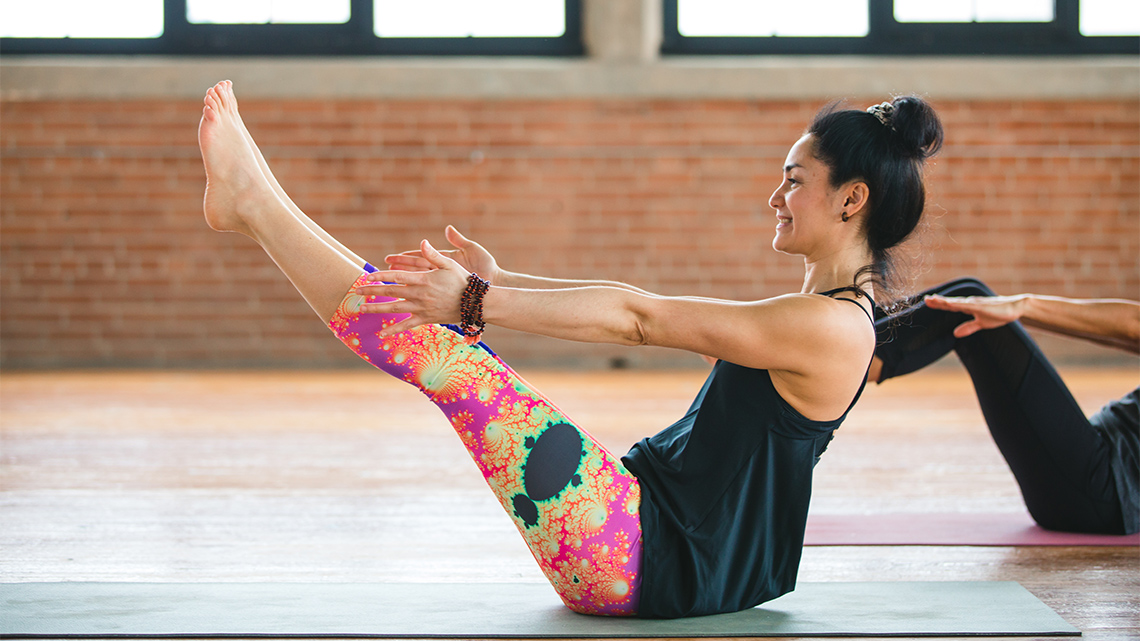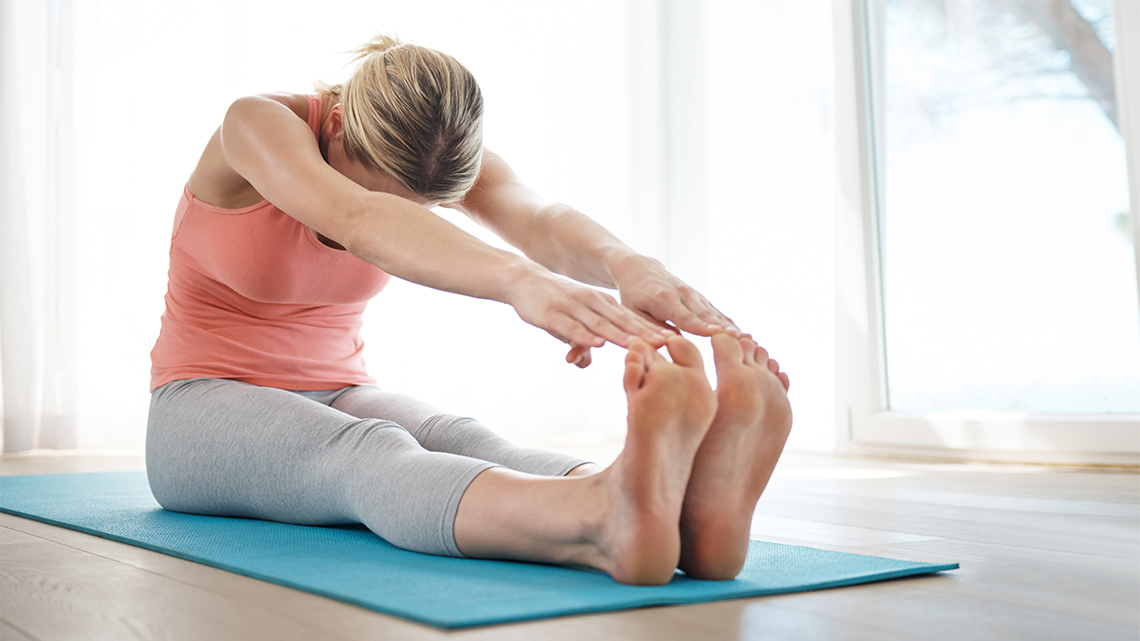Minds On
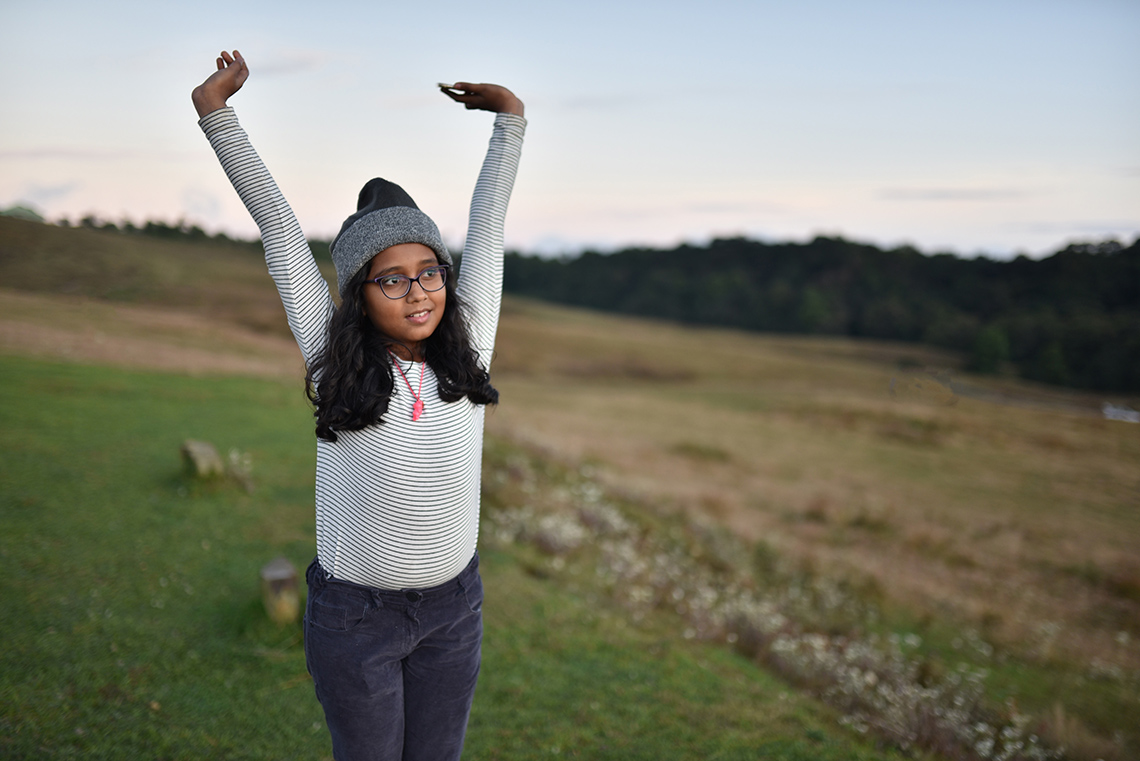
Non-locomotor movements are important for our health, and when done consistently, they can help strengthen and support our bodies during everyday activities. These types of movement require strength and flexibility. They help condition us or help us recover from various sports and physical activities.
Examine the following carousel for examples of non-locomotor movements.
Brainstorm
Different movements
What are some different ways people can move their bodies when staying in one place?
Come up with as many ideas as you can. Record your answers using a method of your choice.
Action
Non-locomotor movements

Non-locomotor skills are all important body movements that are performed in the same spot. They are often focused on specific body parts but can also include the entire body.
Non-locomotor movements help improve flexibility, coordination, balance, and mobility, which in turn supports the ability to complete locomotor movements throughout the day.
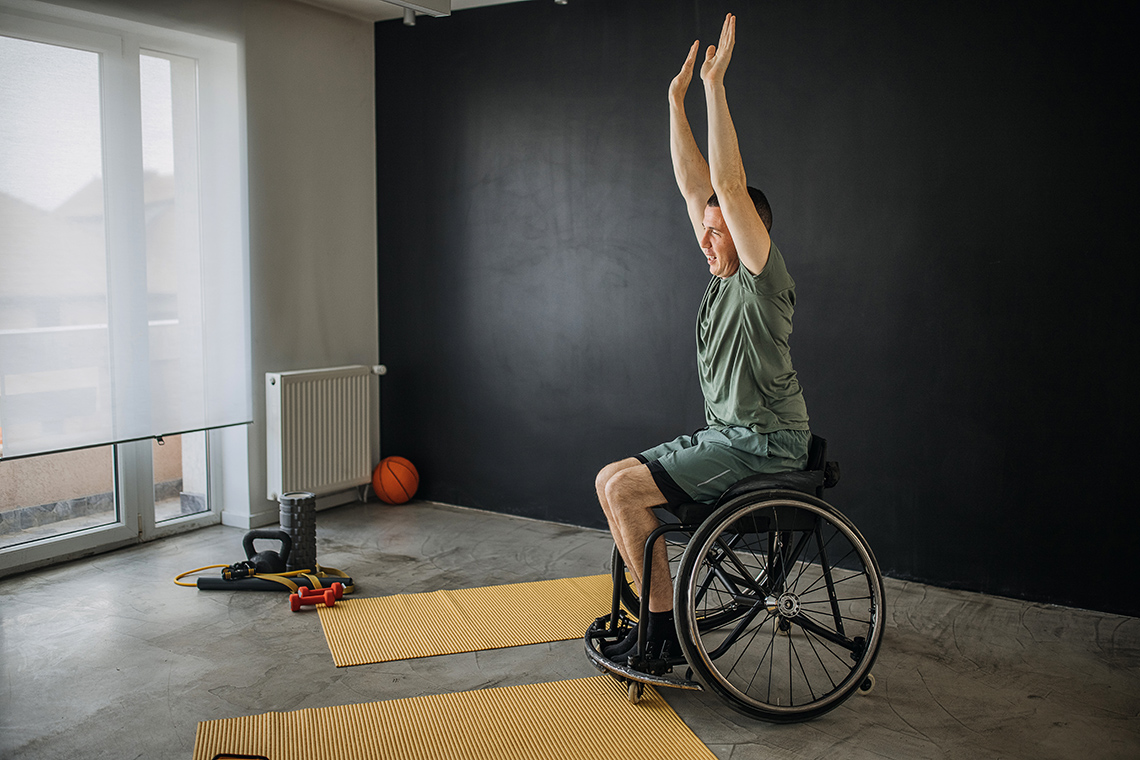
For example, non-locomotor movements could include:
- bending
- twisting
- turning
- rotating
- lifting
- stretching
Let’s begin our warm up by exploring and performing various non-locomotor movements.
Safety
Before you begin, consider these safety precautions:
Warm Up
Time to get moving
For our warm up, let’s explore the video entitled “Power Up: Circus 4” to learn more about how to perform non-locomotor movements. Follow along with the various actions demonstrated in the video as best as you can.
What did you notice?
What were the different types of movements demonstrated in the video? How were they different than the ideas you brainstormed in the Minds On section?
Add any new movements you discovered to the list you created in the Minds On section. You may do so in a method of your choice.
Non-locomotor movements
Explore the following videos and images of non-locomotor movements and how to perform them. Each type of movement represents a category of non-locomotor movements. For example, there are many ways we can stretch our bodies!
After you have examined how to perform a movement, attempt to do the movement for up to 30 seconds. That’s over three minutes of activity. Can you do them one after the other?
Press the following tabs to explore ways to complete each movement.
Balancing is the ability to distribute or shift weight evenly in a variety of positions.
The tree pose is an example of a balancing movement. To complete this pose, begin with your feet together. Place any foot above or below the opposite knee. When you feel balanced, squat slowly while maintaining your pose. You may either keep your hands to your side or above your head.
Access the following video to learn more about how to perform a tree pose.
You can also try the tree pose in a seated position. To start, keep your feet together on the floor and your arms at your sides. Point your right foot and turn your right knee to the side. As you inhale, raise your arms and bring your palms together above your head. You may repeat this with your left leg.
Explore the following video to learn more about how to perform a seated tree pose.
Stretching involves types of movement in which you focus on flexing or stretching specific muscles. This can improve your flexibility, your range of motion, and control.
A standing quad stretch is an example of a stretching exercise. Try this movement by standing with your feet hip-length apart. Bend your right leg at the knee and hold your right foot with your left hand, stretching your left towards your back. Repeat with the left leg.
Check out the following video to learn more about performing a standing quad stretch.
Another stretching movement that you can try is the across body shoulder stretch. You may sit or stand for this movement.
Access the following video to learn more about how to perform an across body shoulder stretch.
Turning refers to rotating the body on an axis. For example, pivoting on one foot turns the body in the opposite direction. Twisting is rotating a part of the body around its axis, such as moving at the waist to twist your body to the side. Both are useful for sports like gymnastics, dancing, and tumbling, as well as everyday activities like vacuuming, moving, or putting items away.
Explore the following video to learn more about turning and twisting.
Bending can help increase and maintain flexibility. We can bend in many different directions. An example of a curling movement is a sit-up.
Check out the following video to learn more about bending and curling motions.
Swinging refers to the ability to move a body part either side-to-side or back-and-forth. It helps develop balance, strength, and spatial awareness, which is the ability to recognize other people, objects, and things around you and your position relative to them.
Swinging can be combined with locomotor movements in activities like aerobics and sports, such as golf or basketball.
Access the following video to learn more about swinging motions.
Source: Reference.com, 2021
Creating and performing a circuit
Non-locomotor activities are often done in sequence as part of an activity like yoga, a warm up before exercising or participating in a sport, or as a cool down after these activities. In this activity, you are going perform a circuit. You will then put together your own circuit of activities that another person could perform to learn about non-locomotor movements.
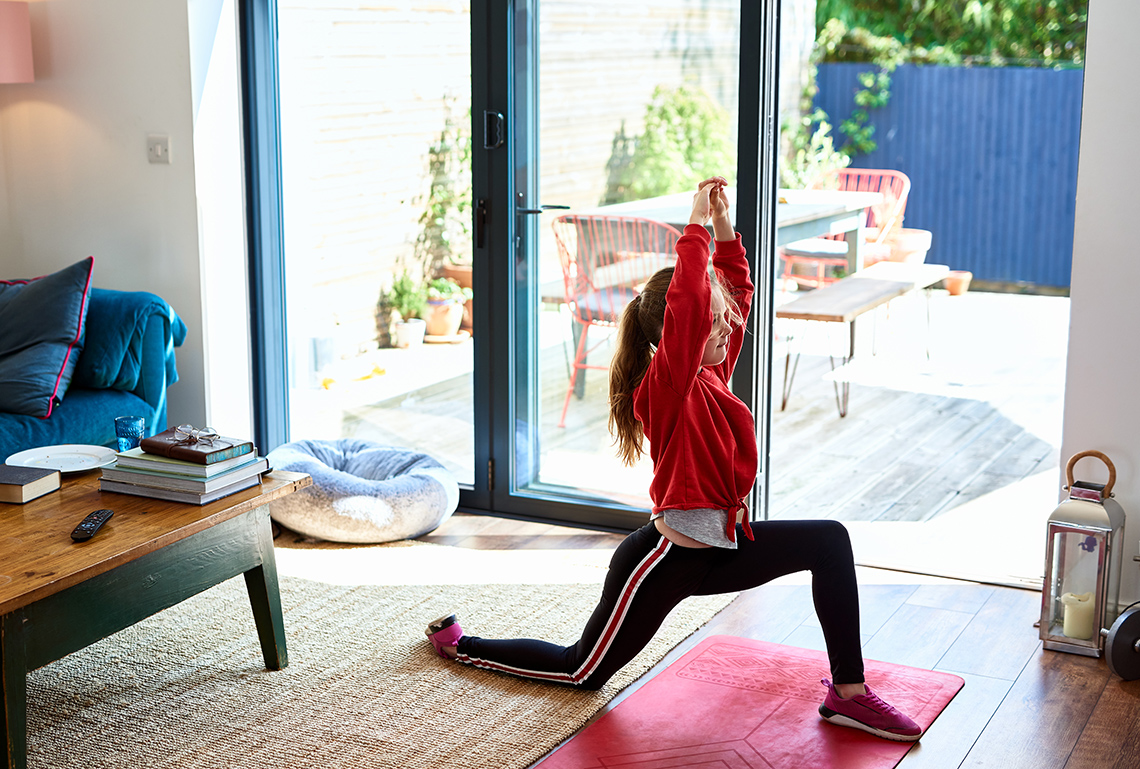
To create a circuit, you will set up five different places in a room where a different movement will be performed. When you arrive at that spot, you perform the movement. These places are called stations.
Materials Needed
Equipment
If possible, the circuits should be done with an object to mark the location of each station. You could use masking tape, a stack of books, or any object that is safe and won’t move around.
Always be sure to do your safety checks before performing an activity.
Try a non-locomotor circuit
Now it’s time to perform a circuit! Use this checklist to guide you in setting up and performing this activity.
Circuit list
Perform each movement in the following list for 30 seconds before moving to the next one.
- Station 1: Toe touch
- Station 2: Squat
- Station 3: Backbend
- Station 4: Pivot left and right
- Station 5: Plank
Create your own circuit

Now that you’ve explored the steps to performing a non-locomotor circuit, you can try creating your own. Use movements you explored today or ones that you already know.
Circuit tips
Each movement in your circuit should be performed for up to 30 seconds each. If the movement focuses on one limb, do the movement for the same amount of time on each side.
Complete the My Circuit Organizer in your notebook or using the following fillable and printable document. If you would like, you can use speech-to-text or audio recording tools to record your thoughts.
| My Circuit Organizer | |||||
|---|---|---|---|---|---|
| Station |
1. |
2. |
3. |
4. |
5. |
| Movement | |||||
|
You may draw the area you plan to perform your circuit in and show where each station is going to be. |
Press the ‘Activity’ button to access My Circuit Organizer.
When your circuit is ready, you can go through it! Complete the circuit three times before you finish.
Let's review
- What did you notice about the first circuit? Was it specific to a sport or daily activity?
- Were you able to complete the first circuit three times? Why or why not?
- Were any of the movements difficult for you to complete? Why do you think this is? What does it tell you about your body?
- Why did you choose the movements you did for your circuit?
Cool Down
Time to cool down
It is time to rest our bodies. Remember to take slow and deep breaths during these stretches to allow your heart rate to return to a normal pace.
Review the following images for a few ways to cool down.
Consolidation
Creating a movement routine

In the previous section, you explored many different types of non-locomotor movements and how they can be put together in a sequence. Now let’s try creating your own movement routine using non-locomotor movements. This routine should be about 5-10 minutes in length.
Press the following tabs to access steps for making your routine.
To begin, decide if your goal is to improve flexibility, strength, balance, or coordination (or a combination).
Choose a daily activity, sport, or physical activity the routine will help improve. For example, you might create a flexibility routine to help improve someone’s basketball skills, or you could design a strength and flexibility routine to help improve their swing.
Select one or more types of movement from the following list:
- bending
- twisting
- turning
- rotating
- lifting
- stretching
- pushing
- balancing
These will be the movements that make up your routine. They should flow together to create one fluid routine. For example, you may only choose bending moves or rotating moves, or you might choose twisting, turning, rotating moves depending on your fitness goal and activity.
For each movement you select, describe how you will perform the movement. You should also describe how it supports your fitness goal and/or related sport.
For example, for the stretch movement, you could explain the person needs to stretch at the waist and slowly try to reach their hands down to their toes.
For the fitness goal/related sport, you could explain how this stretch helps stretch the back and upper legs before playing football or helping someone move furniture.
Student Tips
Cue the music
Try using music and props to enhance the routine!
Complete the My Movement Routine Organizer in your notebook or using the following fillable and printable document. If you would like, you can use speech-to-text or audio recording tools to record your thoughts.
|
Order |
1 |
2 |
3 |
4 |
|
Movement |
||||
|
Description of movement |
||||
|
How it supports fitness goals/sports movement |
Press the ‘Activity’ button to access My Movement Routine Organizer.
Let's review
- Did you use music to enhance your routine? Why or why not?
- Why do you think it is important to connect fitness goals or sports/activity movement to the routine?
- Do you think four movements are enough for a routine? Should you add more or less movements? Why?
- Did you choose one type of movement such as stretching or did you combine movements? Why or why not?
Reflection
As you read through these descriptions, which sentence best describes how you are feeling about your understanding of this learning activity? Press the button that is beside this sentence.
I feel…
Now, record your ideas using a voice recorder, speech-to-text, or writing tool.
